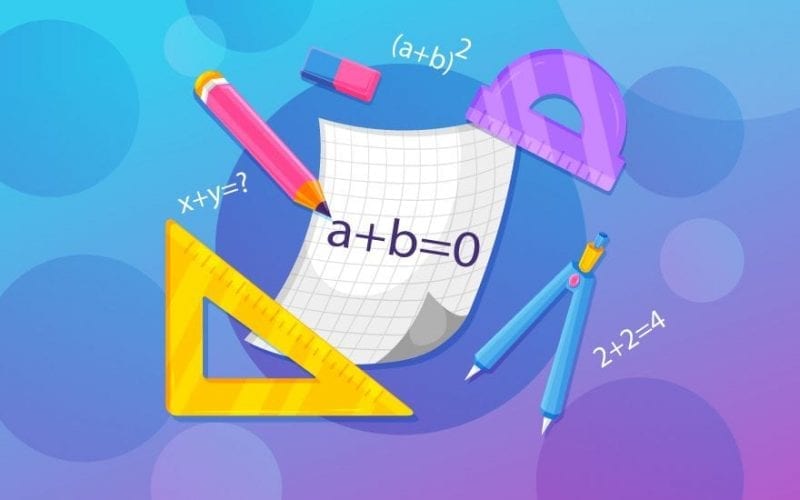A doorway for MBA and other management programs in the world, GMAT is a computer-based management entrance exam for students planning to get admission to any of the top business schools abroad. The section in the GMAT exam, which fears the heart of most of the test takers is the Quantitative Reasoning section that consists of 31 MCQs, required to be completed in 62 minutes. This section is designed to test the candidate’s content and analytical knowledge of basic math concepts, through questions related to Data Sufficiency and Problem Solving. The questions are framed around mathematical topics like elementary Algebra, Arithmetic and commonly known concepts of Geometry. Through this blog, we specially highlight some of the common Arithmetic questions for GMAT Quantitative Reasoning section and how to solve them like a pro.
This Blog Includes:
Exam Pattern of GMAT | Leverage Edu
What is Arithmetic?
Working with numbers, which includes carrying out different operations including addition, subtraction, multiplication, and division, is known as arithmetic in mathematics. And this group of procedures is known as arithmetic operations. In order to correctly answer arithmetic problems, we also apply the BODMAS rule.
List of Arithmetic Questions for GMAT Quantitative Reasoning Section
Before you move on to solving Arithmetic questions, it is important to note that the difficulty level of the questions revolve around your logic and analytical skills and not the underlying math abilities. Also, you are not allowed to use a calculator while answering this section.
The Arithmetic questions will cover important topics like:
- Combinatorics (Factorials, Combinations and Permutations)
- Fractions
- Percents
- Number Properties
- Operations
- Probability
- Statistics (Mean, Median, Mode and Standard Deviation)
Let us take a look at each one of these in detail:
Combinatorics
Combinatorics is a branch of mathematics that is concerned with counting and arranging. The questions are framed around framed the concepts of Factorials, Combinations and Permutations.
Question 1: How many different unique combinations of letters can be created by rearranging the letters in mathematics?
- 10!
- 2!
- 11!/6
- 8!/3
- 11!/8
Solution 1: E
Count the number of times each letter is repeated and the total number of letters.
Letters Occurring Once: s,e,h,i,c = 5 letters
Letters Occurring Twice: m,a,t = 3 letters
Total Number of Letters, n = 51 + 32 = 11
Now use the formula for repeated items.
The three instances of 2! in the denominator takes into account the fact that 3 letters each occur twice.
Want to get admission to your dream university abroad? Then, Register Here!
Fractions
Fraction is defined as a number that represents a whole number, which can be divided into equal parts. One of the types of Arithmetic questions framed from this topic has been solved below:
Question 2:
- 0.1
- 1
- 10
- 100
- 1000
Solution 2: D
= ³0.000064 = (0.02)²
= (0.02)² = 0.0004
= 0.040.0004 = 4004 = 100
Number Properties
Arithmetic questions framed for the GMAT Quantitative Reasoning Section from this topic include 4 basic properties of numbers – Commutative, Associative, Distributive, and Identity. Take a look at the example given below:
Question 3: How many keystrokes do we need to type numbers from 1 to 1000?
- 3001
- 2893
- 2704
- 2890
- None of these
Solution 3: B
When you type numbers 1 to 1000 from 1 to 9, each of these numbers requires one keystroke = 9 keystrokes
When you type numbers 90 two-digit numbers, from 10 to 99, each of these numbers requires 2 keystrokes = 80 keystrokes
When you type numbers 900 three-digit numbers, from 100 to 999, each of these numbers requires 3 keystrokes = 2700 keystrokes
Similarly, four-digit number, 1000 requires 4 keystrokes
Therefore, a person will require = 9 + 180 + 2700 + 4 = 2893 keystrokes
Probability
Probability refers to a possibility which is the branch of mathematics that calculates the occurrence of a random event.
Question 4: Tickets numbered from 1 to 10 are mixed together and then a ticket is drawn randomly. Calculate the probability of the number of times that the ticket has been drawn has a number which is a multiple of 2 or 4.
Solution4: Here, S = {1, 2, 3, 4, 5, 6, 7, 8, 9, 10}.
Let “E” be the event of getting a multiple of 2 or 4 is [2, 4, 6, 8, 10].
Therefore, \(P(E) = \frac{n(E)}{n(S)} = \frac{5}{10}\)
Statistics (Mean, Median, Mode and Standard Deviation)
A branch of Mathematics, which involves the study of the collection, interpretation, presentation, analysis, and organization of data, is known as Statistics. Arithmetic questions which are framed from this topic are from Mean, Median, Mode, and Standard Deviation.
Question5: Find the mode of the given data set {4, 7, 4, 4, 2, 3, 4, 7, 5, 6, 8}.
Solution5: Under the given data set [4, 7, 4, 4, 2, 3, 4, 7, 5, 6, 8], we clearly observe that the digit 4 is the most frequently occurring digit in the entire set. Thus, the Mode of the data set is equal to 4.
Are you looking forward to preparing for the Arithmetic questions for the GMAT Quantitative Reasoning section? Then, our experts at Leverage Edu can guide you on how to strategize better so that you can ace the test and soar towards your dream university.

 One app for all your study abroad needs
One app for all your study abroad needs





















 45,000+ students realised their study abroad dream with us. Take the first step today.
45,000+ students realised their study abroad dream with us. Take the first step today.

